Emergencies can happen when we least expect them, and having a well-stocked first aid kit at home is essential for emergency preparedness. A DIY first aid kit can be tailored to your specific needs and can provide immediate care until professional help arrives. In this section, we’ll discuss the best DIY first aid kits, essential first aid supplies, and everything you need to know to build and maintain your own kit.
Key Takeaways
- Having a DIY first aid kit at home is crucial for emergency preparedness
- Essential first aid supplies for home kits include bandages, antiseptics, adhesive tapes, scissors, gloves, and more
- Building a DIY first aid kit can be done step-by-step and tailored to your specific needs
- The best DIY first aid kits are those that suit your requirements and budget
Why DIY First Aid Kits Are Essential
Emergencies can happen at any time, and having a well-prepared DIY first aid kit can make a significant difference in providing immediate care. Whether it’s a minor injury at home or a more severe incident while outdoors, having the right first aid supplies can help stabilize conditions and provide comfort until professional medical help arrives.
DIY first aid kits are essential for emergency preparedness, allowing individuals and families to take control of their health and safety. While professional medical services are always recommended for severe injuries or emergencies, a well-stocked first aid kit can provide immediate care and prevent conditions from worsening.
One of the main advantages of DIY first aid kits is their convenience and flexibility. Unlike pre-packaged kits, DIY kits can be tailored to individual needs and preferences, ensuring that they contain the necessary items for specific situations. Additionally, DIY kits can be easily replenished, allowing individuals to replace used or expired supplies and ensure that their kits are always up-to-date.
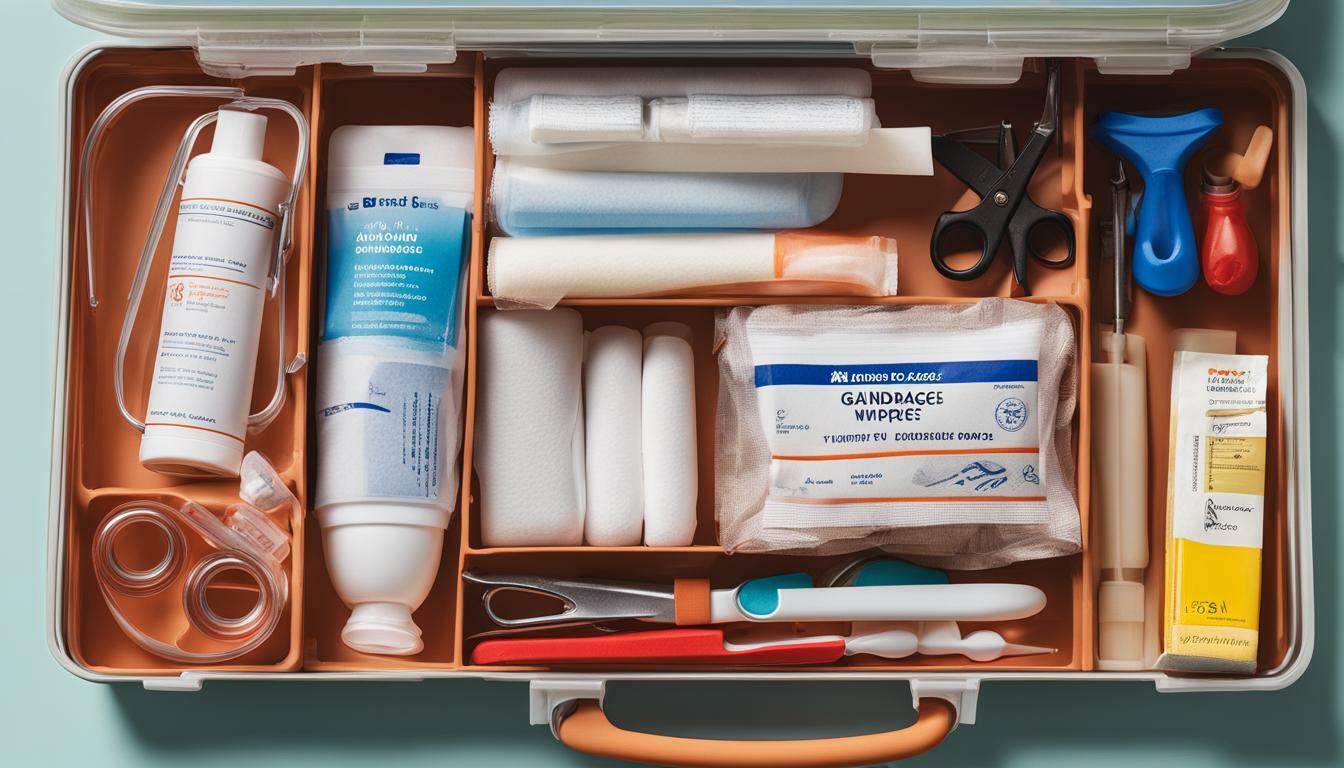
The best DIY first aid kits should contain a range of first aid supplies, including bandages, antiseptics, adhesive tapes, scissors, gloves, and more. Having a comprehensive first aid checklist can help individuals ensure that they have all the necessary items to deal with minor injuries and common emergencies at home.
Overall, DIY first aid kits are essential for individuals and families to be prepared for emergencies and take control of their health. While they should not replace professional medical care, having a well-stocked and maintained first aid kit can make a significant difference in providing immediate care and stabilizing conditions during emergencies.
Essential First Aid Supplies for Home Kits
When building a DIY first aid kit, it’s crucial to include the essential first aid supplies to ensure that you are fully prepared for any emergency. Here is a checklist of the must-have supplies that should be included in your first aid kit:
| Item | Quantity |
|---|---|
| Adhesive bandages of various sizes (fabric or plastic) | At least 20 |
| Gauze dressing pads (sterile) | At least 4 |
| Rolled gauze bandage (sterile) | One roll |
| Adhesive tape (hypoallergenic) | One roll |
| Antiseptic wipes or spray | At least 10 wipes or one small spray bottle |
| Tweezers | One pair |
| Scissors (blunt tip) | One pair |
| Disposable gloves (non-latex) | At least 2 pairs |
| Instant cold compress | One |
| Thermometer (digital) | One |
| Tweezers | One pair |
| Pain relievers, such as paracetamol or ibuprofen | In appropriate quantities for household members |
| Prescription medications (for individual household members) | In appropriate quantities |
It’s important to regularly check your first aid kit and replace any expired items or supplies that have been used. Keeping a well-stocked first aid kit at home can help you provide immediate care when it matters most.

Building Your DIY First Aid Kit
Building your own DIY first aid kit can be a straightforward and cost-effective way to ensure you have all the first aid essentials at hand in case of emergencies. Here are some steps to help you get started:
- Choose a container: The first step is to find a suitable container to hold your first aid supplies. Options include a first aid box, a waterproof bag, or a tackle box. Consider the size of your kit and how you plan to store it.
- Organise your supplies: Once you’ve selected your container, it’s time to organize your supplies. Use a first aid checklist to ensure you have all the essential items, such as bandages, antiseptics, adhesive tapes, scissors, gloves, and more. Arrange the supplies in compartments or small bags within the kit for easy access.
- Include first aid equipment: In addition to basic supplies, consider adding some first aid equipment to your kit. These may include a thermometer, tweezers, a splint, a first aid manual, and other items that can help you provide better care.
- Choose quality materials: Select high-quality materials that can withstand wear and tear and protect the contents from moisture or damage. Buy from reputable sources and opt for brands proven to be reliable.
- Customize your kit: Depending on your needs, you may want to add specific medications or items to your kit. For example, if you have allergies or chronic conditions, include any necessary medications or medical devices. First aid materials like sterile gauze, an eye patch, or a CPR mask may be necessary for specific situations.
Building a DIY first aid kit can be a fun and educational project for families or individuals. It can also help you feel more confident and prepared in case of emergencies. However, it’s important to regularly check and replenish your supplies to ensure they remain effective and up to date.
If you’re not sure where to start, there are many pre-made first aid kits available on the market. Look for the best DIY first aid kits in the UK that fit your needs and budget, or use them as a reference for building your own kit.
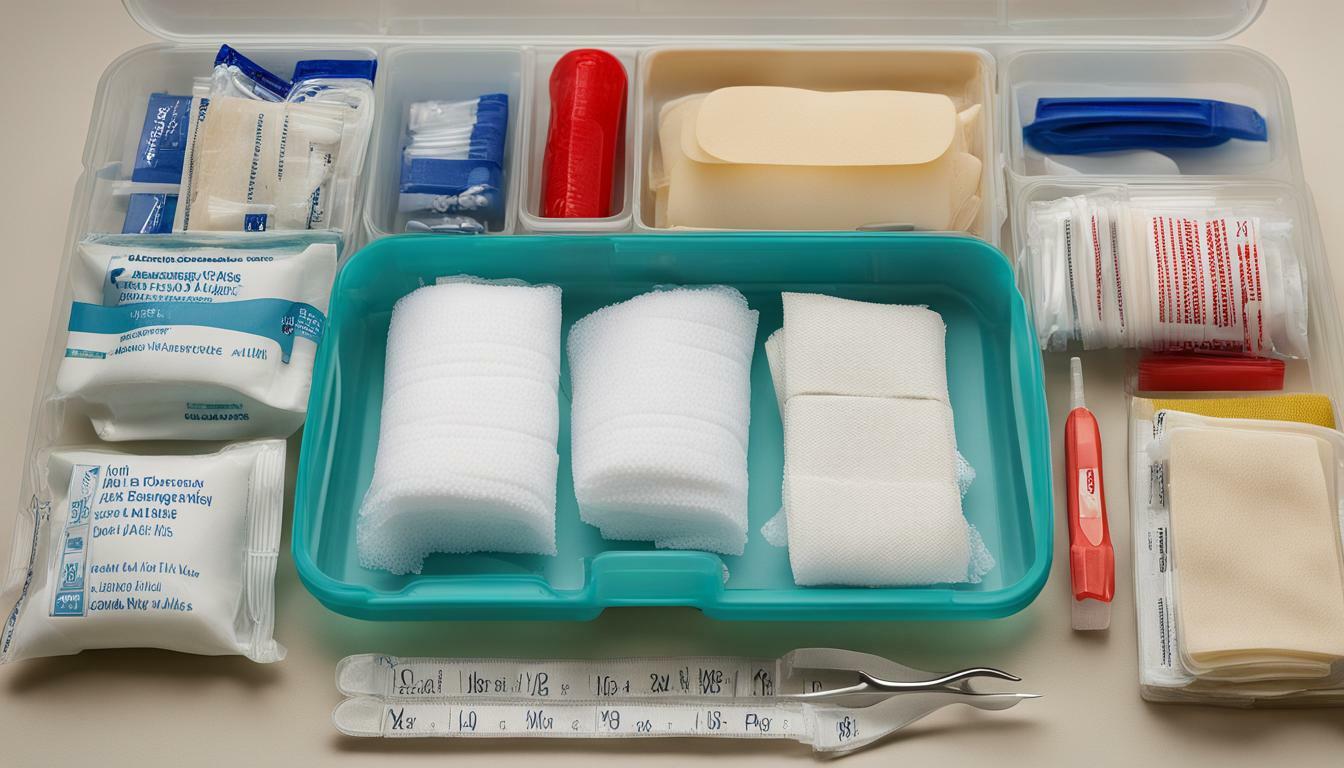
Recommended DIY First Aid Kits in the UK
There are many options available when it comes to choosing the best DIY first aid kit for your needs. We have rounded up some of the top-rated and most popular first aid kits on the market in the UK, ensuring that you have all the necessary first aid items on hand in the event of an emergency.
| Kit | Description | Price |
|---|---|---|
| St John Ambulance Workplace Kit | This kit is designed for businesses and workplaces, but it is also suitable for larger families. It contains a wide range of first aid essentials, from bandages and dressings to a resuscitation face shield. The kit comes in a durable plastic box and is wall-mountable for easy access. | £25 – £60 |
| Lifesystems Mountain First Aid Kit | This kit is ideal for outdoor enthusiasts and hikers. It contains a variety of first aid items, including a thermal blanket, antiseptic wipes, and a blister plaster. The kit comes in a waterproof bag and is lightweight and compact, making it easy to carry on your outdoor adventures. | £25 – £50 |
| Red Cross Personal First Aid Kit | This kit is perfect for individuals or small families and contains all the essentials needed for minor injuries and emergencies. The kit includes items such as plasters, antiseptic wipes, and a triangular bandage, all of which are neatly organized in a compact zip-up pouch for easy storage and transportation. | £10 – £20 |
| St John Ambulance Motorists First Aid Kit | This kit is specifically designed for motorists and contains items such as a foil blanket and a window breaker in case of an accident. The kit comes in a compact and durable case that can be easily stored in your car. | £10 – £15 |
Whether you’re heading outdoors, hitting the road, or simply staying at home, a DIY first aid kit can offer peace of mind during emergencies. Choose the kit that best suits your needs and make sure you’re prepared for any situation.
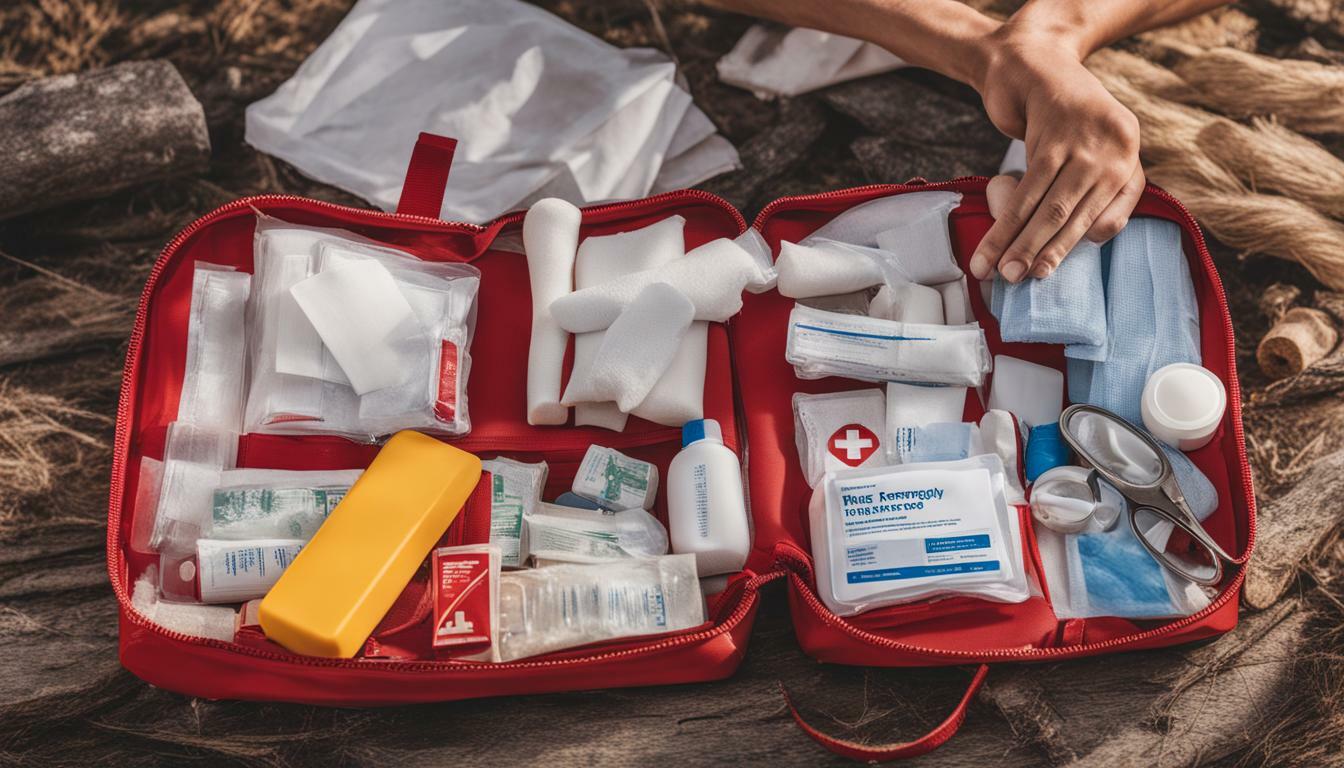
DIY First Aid Kits for Specific Needs
While a well-stocked first aid kit can provide basic care for a broad range of emergencies, some situations require particular attention. Tailoring a DIY first aid kit to specific needs can ensure that individuals are prepared for any emergency.
For families with children, it is essential to have first aid supplies that cater to the unique needs of kids. In addition to the standard first aid essentials, include items like children’s pain relief medication, age-appropriate bandages with cartoon characters, and a thermometer. Consider adding an emergency contact list that includes the names and phone numbers of family doctors and a local hospital.
Pet owners should also consider assembling a first aid kit for their furry friends. The kit should include items like pet-specific bandages, hydrogen peroxide for inducing vomiting, and tick removal tools. Consult with a veterinarian for any additional recommendations to suit the specific needs of the pet.
Individuals with specific medical conditions, such as allergies, diabetes, or asthma, must have a personalized first aid kit. Include essential medications, such as epinephrine injection for severe allergic reactions, insulin for diabetes, or inhalers for asthma. Consult with a healthcare professional for any additional recommendations.
Having a specialized first aid kit for specific needs is crucial in providing timely and appropriate care during emergencies.
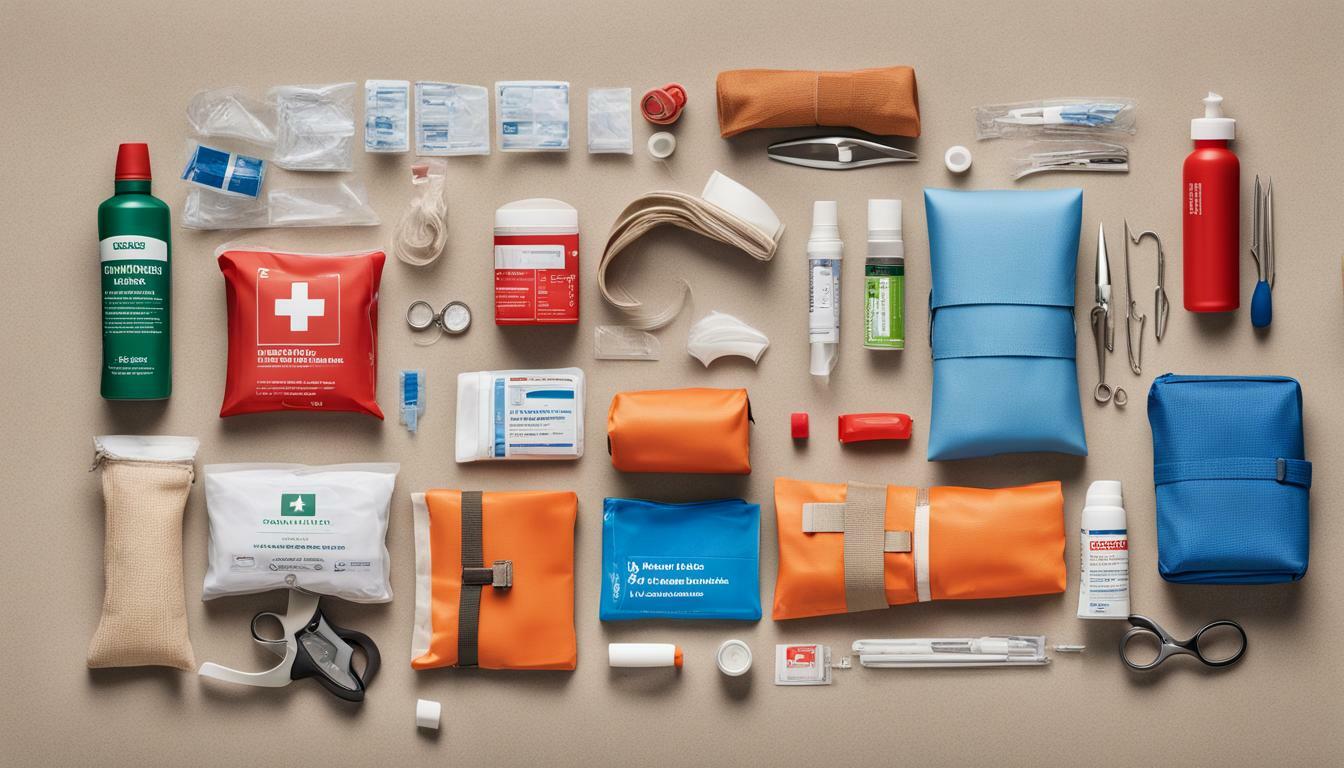
When assembling a DIY first aid kit for specific needs, it is essential to maintain a checklist and ensure that essential items are regularly checked for expiry dates and replaced as needed. With the right supplies on hand, individuals can be better equipped to handle emergencies and provide immediate care.
Maintaining and Updating Your DIY First Aid Kit
A well-stocked DIY first aid kit can be a lifesaver during emergencies, but it’s important to regularly maintain and update it to ensure that the supplies are usable and up-to-date. Here are some essential tips for keeping your kit in excellent condition:
Check your First Aid Supplies Regularly
Ensure that your first aid supplies are in good working condition by checking them regularly. Some items, like adhesive tapes, latex gloves, and antiseptics may have an expiration date, so check regularly for expiry dates. Replace any expired or damaged items promptly.
Use a First Aid Checklist
Use a comprehensive first aid checklist to ensure that your DIY first aid kit is well-stocked and up-to-date. A checklist can help you keep track of essential first aid items, such as bandages, scissors, and cold compresses.
Organize Your First Aid Kit
Keep your first aid supplies organized and easily accessible. Sort items into labeled compartments or pouches to ensure that you can find what you need quickly during emergencies.
Store Your First Aid Kit Properly
Store your DIY first aid kit in a cool, dry place, and away from direct sunlight. Consider using a sturdy first aid box or a water-resistant bag to protect the supplies from damage.
By following these essential tips, you can ensure that your DIY first aid kit is always well-maintained and ready to use during emergencies.

Conclusion
Regular maintenance and updating of your DIY first aid kit is crucial for ensuring that you’re always prepared for emergencies. Use a comprehensive first aid checklist, keep your kit organized, and store it properly for optimal use. Don’t wait until an emergency happens to make sure your kit is ready – take action today to ensure that you’re prepared for any situation.
First Aid Training and Additional Resources
Having a well-stocked DIY first aid kit is crucial for emergency preparedness, but it’s equally important to know how to use it. First aid training can provide individuals with the knowledge and skills required to respond effectively to various emergencies. Learning basic techniques, such as CPR, wound care, and fracture immobilization can potentially save lives and reduce the severity of injuries.
In the UK, there are numerous organizations that offer first aid courses, including St. John Ambulance, the Red Cross, and the Royal Life Saving Society. These courses are often tailored to different levels of experience and can range from basic to more advanced courses for medical professionals. Individuals can also attend free first aid training through community organisations and local councils.
Aside from attending formal courses, there are numerous resources available online that can help individuals learn more about first aid and emergency preparedness. The NHS provides a range of first aid guides, including step-by-step instructions and videos. Mobile apps, such as the Red Cross First Aid App, can also provide useful information and resources that can be accessed on-the-go.
By investing in first aid training and resources, individuals can improve their preparedness for emergencies and potentially save lives.
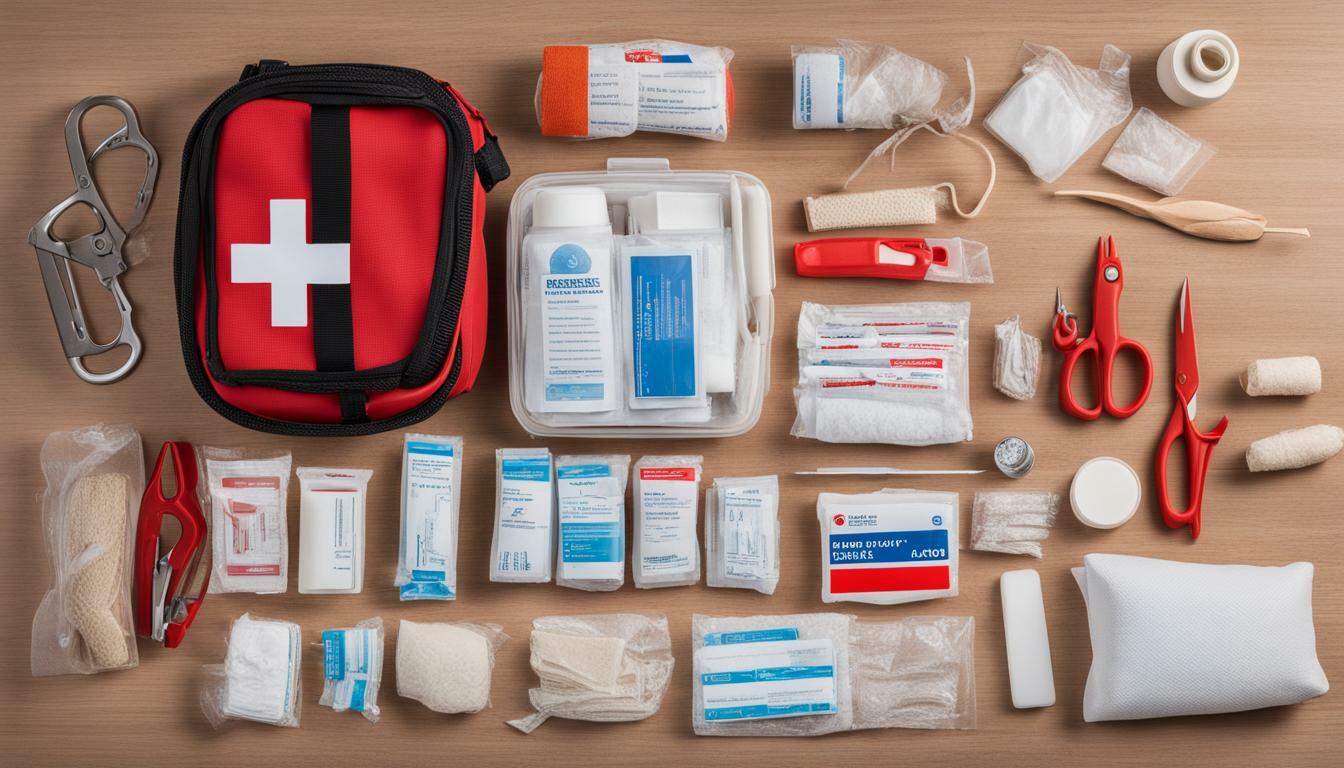
First Aid Kits vs. Professional Medical Care
While DIY first aid kits are essential for providing immediate care in emergencies, they have limitations, and there are circumstances where seeking professional medical care is necessary. It is important to understand the scope of first aid and when it is appropriate to call for emergency services or visit a healthcare professional.
If an injury or illness is severe or life-threatening, calling for professional medical care is crucial. Examples include heart attacks, strokes, severe bleeding, severe burns, or fractures. In these situations, calling for emergency services immediately is necessary to receive appropriate treatment.
Another limitation of DIY first aid kits is that they cannot replace the expertise and training of healthcare professionals. While basic first aid skills can be learned, healthcare professionals have the knowledge and resources necessary to provide more advanced treatment and care. They can also diagnose underlying medical conditions that may require additional medical attention.
Therefore, DIY first aid kits are meant to provide immediate care and stabilize conditions until professional help arrives. They are not a replacement for professional medical care, and it is crucial to seek appropriate medical attention when necessary.
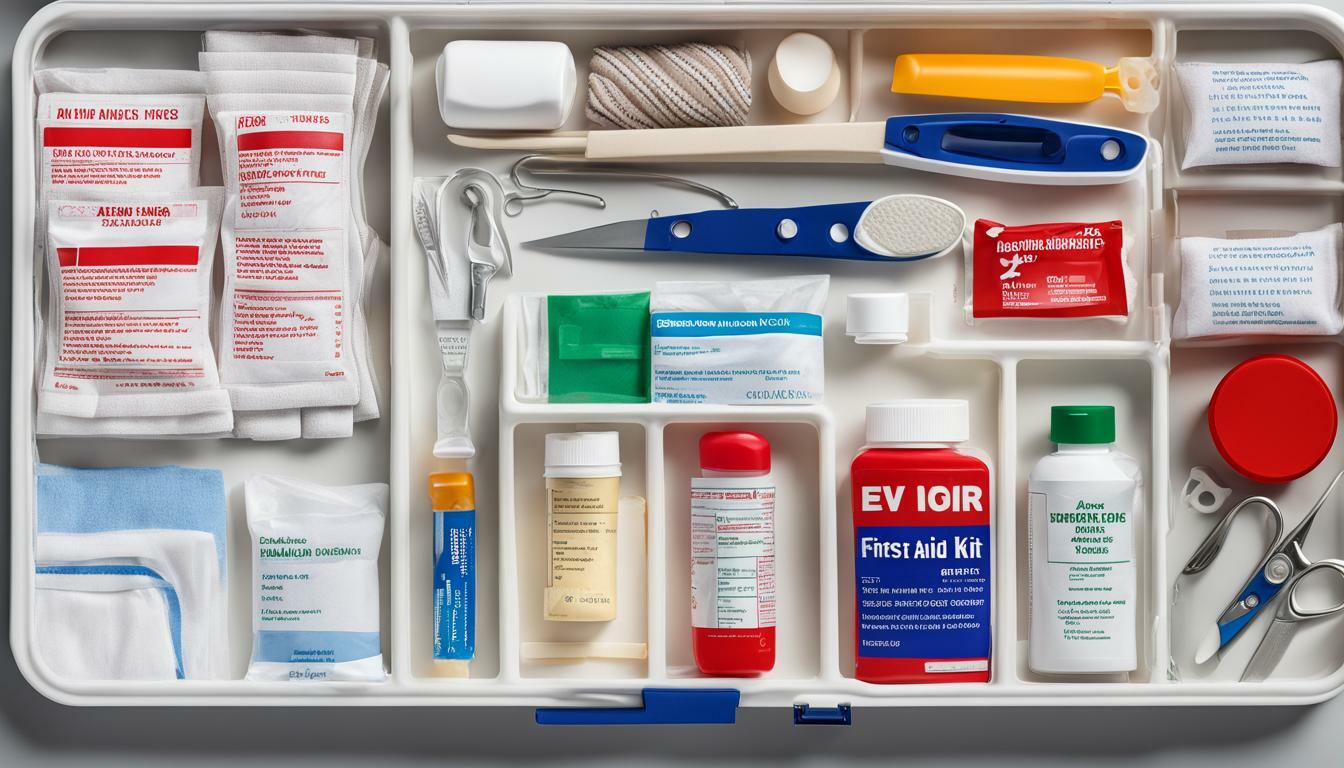
Essential First Aid Tips for Emergencies
In case of an emergency, knowing some basic first aid tips can make a significant difference in providing immediate care and stabilizing the condition until professional help arrives. Here are some essential first aid tips for emergencies:
- Cuts: Clean the wound with water, apply direct pressure with a sterile bandage or cloth until bleeding stops, and cover with a clean bandage or wrap.
- Burns: Run cold water over the affected area for 20 minutes, remove any jewelry or tight clothing around the burn, and cover with a sterile gauze or non-adhesive bandage.
- Sprains: Rest and elevate the affected area, apply an ice pack for 20 minutes at a time, and wrap with an elastic bandage.
- Fractures: Immobilize the affected area with a splint or sling, apply ice if possible to reduce swelling, and seek medical attention immediately.
- Choking: Stand behind the person and give five sharp blows between the shoulder blades, if unsuccessful, wrap your arms around their waist, make a fist with one hand and place it above their naval, cover with your other hand and thrust inwards and upwards.
- Heart Attack: Help the person sit down and rest, call for emergency services immediately, and give them an aspirin to chew on if possible.
- Stroke: Help the person lie down on their side with their head supported, call for emergency services immediately, and monitor their breathing and pulse.
Remember, always call for emergency services or visit a healthcare professional for severe emergencies or if you are unsure of how to provide appropriate care. However, having a well-stocked first aid kit at home with essential first aid supplies can help you provide immediate care in minor emergencies and potentially save lives.

Essential First Aid Tips for Emergencies
Emergencies can happen at any time, and being prepared with the right information and skills is crucial. Knowing basic first aid techniques can make a significant difference in providing immediate care and stabilizing conditions until medical help arrives. Here are some essential first aid tips to keep in mind:
1. Treat Cuts and Burns Immediately
If you or someone else suffers a cut or burn, take immediate action to treat the affected area. Apply pressure to stop bleeding, clean the wound with soap and water, and cover it with a sterile bandage. For burns, run cool water over the affected area and cover it with a clean, dry cloth.
2. Stabilize Sprains and Fractures
If you suspect a sprain or fracture, immobilize the affected limb as soon as possible. Use a splint or brace to prevent movement and reduce pain. Apply ice to the affected area to reduce swelling and pain.
3. Recognize and Respond to Severe Emergencies
It is important to understand the signs and symptoms of severe emergencies like heart attacks, strokes, and choking. If you suspect someone is experiencing a heart attack or stroke, call emergency services immediately. If someone is choking, perform the Heimlich maneuver to dislodge the obstruction.
4. Stay Calm and Focused
During emergencies, it is easy to feel overwhelmed and panicked. However, it is crucial to stay calm and focused to make rational decisions and provide effective assistance. Remember to take deep breaths and stay focused on the task at hand.
5. Practice Regularly and Seek Professional Training
Finally, the best way to prepare for emergencies is to practice regularly and seek professional training. Attend first aid courses, practice with your DIY first aid kit, and stay informed about the latest medical guidelines and procedures for optimal emergency response. By being proactive and prepared, you can help ensure the safety and well-being of yourself and those around you.
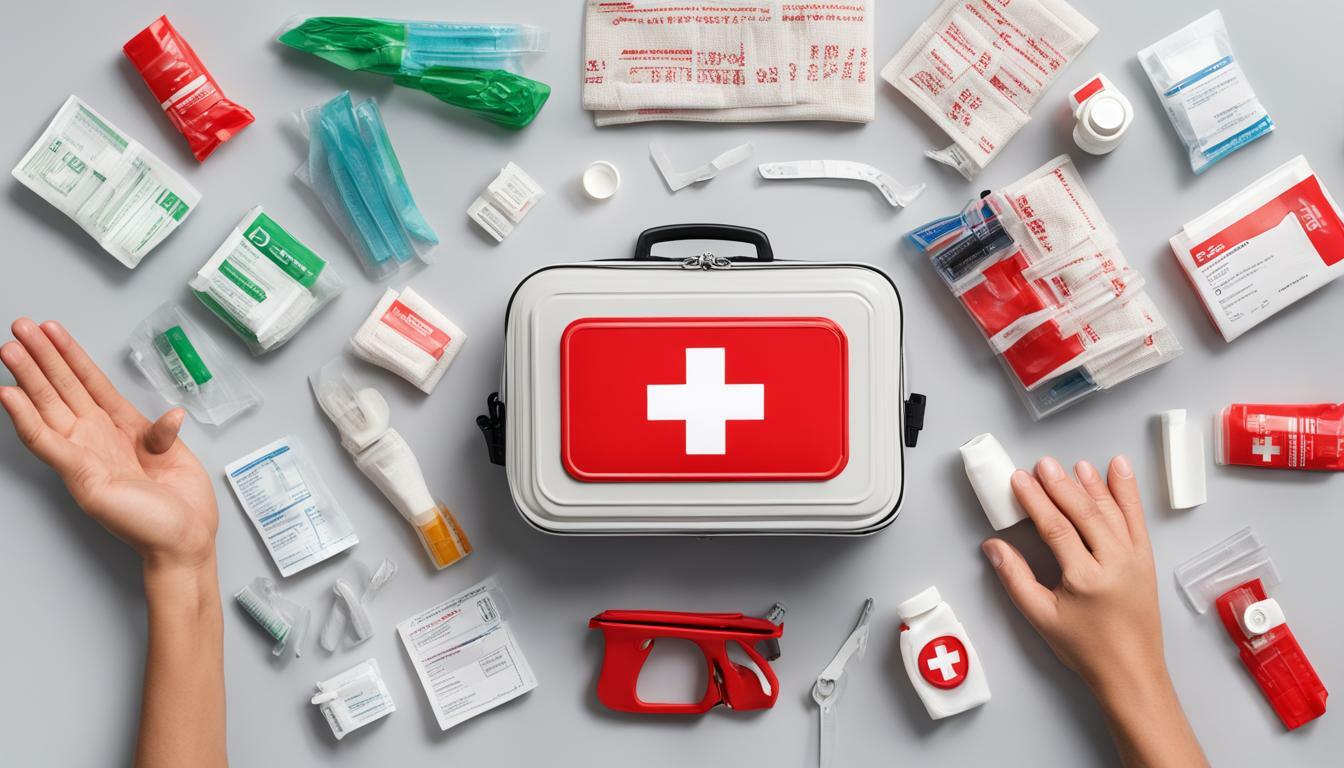
Conclusion
To ensure optimal emergency preparedness, it’s essential to have a well-stocked DIY first aid kit at home. Such kits provide immediate care and can stabilize conditions until professional help arrives. By following our comprehensive first aid checklist, you can ensure that your kit includes all the essential items needed for basic care.
Remember, emergencies can happen at any time, so it’s important to be prepared. Regularly check and update your kit to replace used or expired supplies and keep it clean and organized.
It’s also important to understand the scope of first aid and when to seek professional medical care in certain situations. First aid training can greatly enhance your ability to provide effective assistance during emergencies.
Stay Calm and Prepared
Finally, it’s crucial to stay calm and composed during emergencies. By managing stress and panic, you can make rational decisions and provide effective assistance. Regularly reviewing and practicing first aid techniques can help build confidence and readiness.
Stay informed about the latest medical guidelines and procedures, and take immediate action in assembling or updating your DIY first aid kit. By doing so, you can ensure optimal emergency preparedness for yourself and your loved ones.
